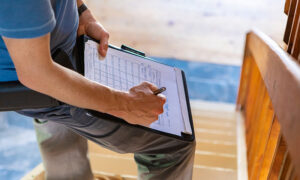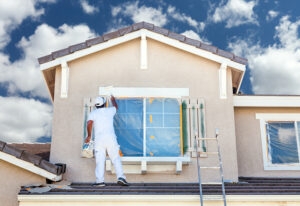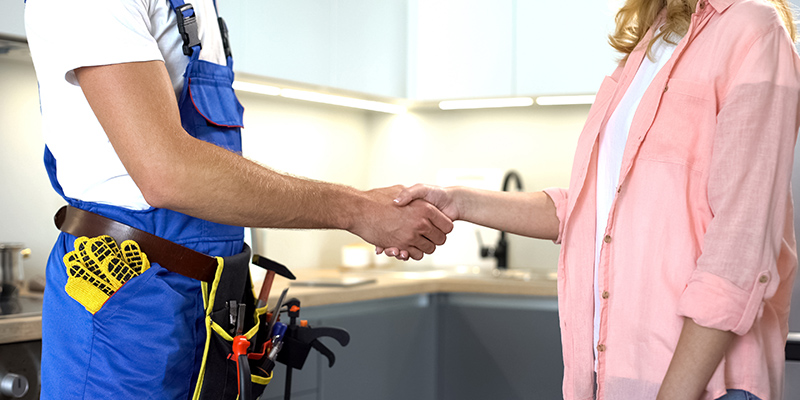Landlords have numerous responsibilities when it comes to running a rental property. One of the most important is rental property maintenance. Why is it essential, and how can landlords deal with it? Let’s find out.
Why Is Rental Property Maintenance Important?
Property maintenance for rentals is crucial for several reasons. Firstly, proper maintenance is vital for finding good tenants. After all, you can’t rent out a dilapidated and unlivable property. Poor upkeep can significantly reduce the rental price even if you make it somewhat livable.
Secondly, maintenance is crucial to maintain your property’s value. This can boost its competitiveness in the rental market, allowing you to drive up the price. It can also help your property remain desirable should you decide to sell your property down the line.
Finally, rental property maintenance is often required by the law. Landlords are legally obligated to keep the property clean and habitable. Otherwise, the tenant may retaliate in several ways.
Tenants may withhold their rent payment, hire a third party to perform the maintenance task, or even call local law enforcement regarding the rental property repairs. They may also evict themselves and file a constructive lawsuit against the landlord, resulting in significant financial losses.
Dividing Responsibility: Rental Property Maintenance for Landlords and Tenants
While rental maintenance is usually the landlord’s responsibility, some things fall under the tenant’s duties. Often, landlords outline the tenant’s maintenance responsibilities in the lease. These can include minor fixes and maintenance like changing lightbulbs, replacing air filters, and routine cleaning.
The landlord’s maintenance responsibilities can vary between states. However, they are typically expected to take care of the following:
- Routine interior and exterior inspections
- Essential mechanical systems such as electrical systems, plumbing, heating, and cooling
- Structural items such as sidewalks, driveways, attics, and roofs
- Safety systems such as carbon dioxide detectors, smoke detectors, radon detectors, and sprinklers
- Fixing major repairs to the property, such as leaks, clogs, broken locks, and mold
- Common area maintenance in multifamily properties
- Rekeying locks between tenants
- Pest infestations
In contrast, tenants are generally expected to keep the property clean and in good condition. Most lease agreements contain terms and conditions that require them to take care of the following:
- Cleaning interior structures such as walls, floors, and ceilings
- Emptying the trash, cleaning appliances, and preventing mold
- Avoiding damage that does not result from regular wear and tear, such as tampering with structural or safety systems, damages from unauthorized pets, sub-renting, and using the property for illegal purposes
- Reporting concerns as they arise to prevent major repairs and damages
How to Maintain a Rental Property
What should you include as a landlord in your rental home or apartment maintenance list? Make sure to include the following to protect your investment.
1. Regular Inspection
 Landlords should conduct routine maintenance inspections on their rental properties. They should check for major damages or smaller issues caused by wear and tear. This also includes checking systems and making sure they are operational.
Landlords should conduct routine maintenance inspections on their rental properties. They should check for major damages or smaller issues caused by wear and tear. This also includes checking systems and making sure they are operational.
If your property needs a significant inspection, consider hiring a rental maintenance company that offers inspections as a part of their services. They can often assess the deeper parts of your property and tell you whether or not there are structural damages to the foundation or growing mold in unseen places.
2. Routine Cleaning and Maintenance
Landlords are often responsible for cleaning the common areas and conducting regular maintenance activities. For instance, the landlord may need to landscape the multifamily property yard or pick up trash around the area.
3. Repairing Mechanical Systems
Mechanical systems such as heating, plumbing, electrical, and gas appliances often need regular maintenance. When enough time passes or if an accident happens, these systems may require repairs and replacements. Remember to fix any broken heater or appliance and ensure they are operational.
4. Flooring and Painting
 Landlords are usually responsible for re-painting the property and ensuring the flooring is in good condition. Generally, landlords repaint properties after a tenant leaves. However, they can also repaint the rental home if enough time has passed.
Landlords are usually responsible for re-painting the property and ensuring the flooring is in good condition. Generally, landlords repaint properties after a tenant leaves. However, they can also repaint the rental home if enough time has passed.
As for flooring, landlords should pay special attention to rental properties with carpeted flooring. These are usually more susceptible to damage as they catch more dirt and suffer more scratches over time. Remember to have the carpet flooring cleaned annually by a professional who offers rental property maintenance services.
5. Seasonal Rental Property Maintenance
Each season brings its own set of maintenance challenges. For example, pipes and floors are prone to freezing in the winter and may need defrosting. Meanwhile, the spring season often increases the population of mosquitoes and other bugs, requiring more stringent pest control.
Keep all of these seasonal changes in mind and create a seasonal maintenance schedule to protect your property. Consider practicing preventive maintenance, such as winterizing pipes and flushing the water heater before winter.
How Much Is Rental Property Maintenance?
The average maintenance cost for rental property will vary based on several factors. Typically, landlords use four methods to budget for their rental property maintenance.
1% Rule
The 1% rule suggests setting aside 1% of the total value of your rental property for annual maintenance. Hence, if the property is worth $300,000, yearly maintenance costs will be around $30,000. This rule is effective because it factors in the cost of labor and materials, which generally go up with house prices.
50% Rule
The 50% rule states that property maintenance management companies should allot half their rental income to maintenance. The other half is used for other fees such as insurance, utilities, and taxes. For instance, a property manager who takes $1,000 monthly should allot $500 to cover maintenance and other fees.
 Square Footage Formula
Square Footage Formula
Landlords can calculate their budget by using a formula based on square footage. This formula assigns $1 in value to each property’s square footage. The landlord then sets aside the total value annually for maintenance. For instance, if the property is 1,300 square feet, the landlord should save at least $1,300 yearly for maintenance.
5X Rule
Landlords can also use the 5X rule, which entails multiplying the monthly rent by 1.5. That amount will be the landlord’s maintenance budget for the entire year. So, for example, if the monthly budget is $2,000, the landlord should allot $3,000 for annual maintenance.
Stay On Top of Maintenance
Rental property maintenance is not always easy. Sometimes, you spot problems early; at other times, they go unnoticed until they become huge problems later. For this reason, it’s usually best to hire a professional to inspect the property annually to prevent significant damage.
Are you in need of professional rental management? Check out our online directory to find the best one in your area!
RELATED ARTICLES:
- How To Determine A Fair Rental Rate Plus Factors To Consider
- 2024 Annual Rental Housing Report Key Takeaways
- How To Make A Rental Application Form That Complies With The Law




 Company
Company